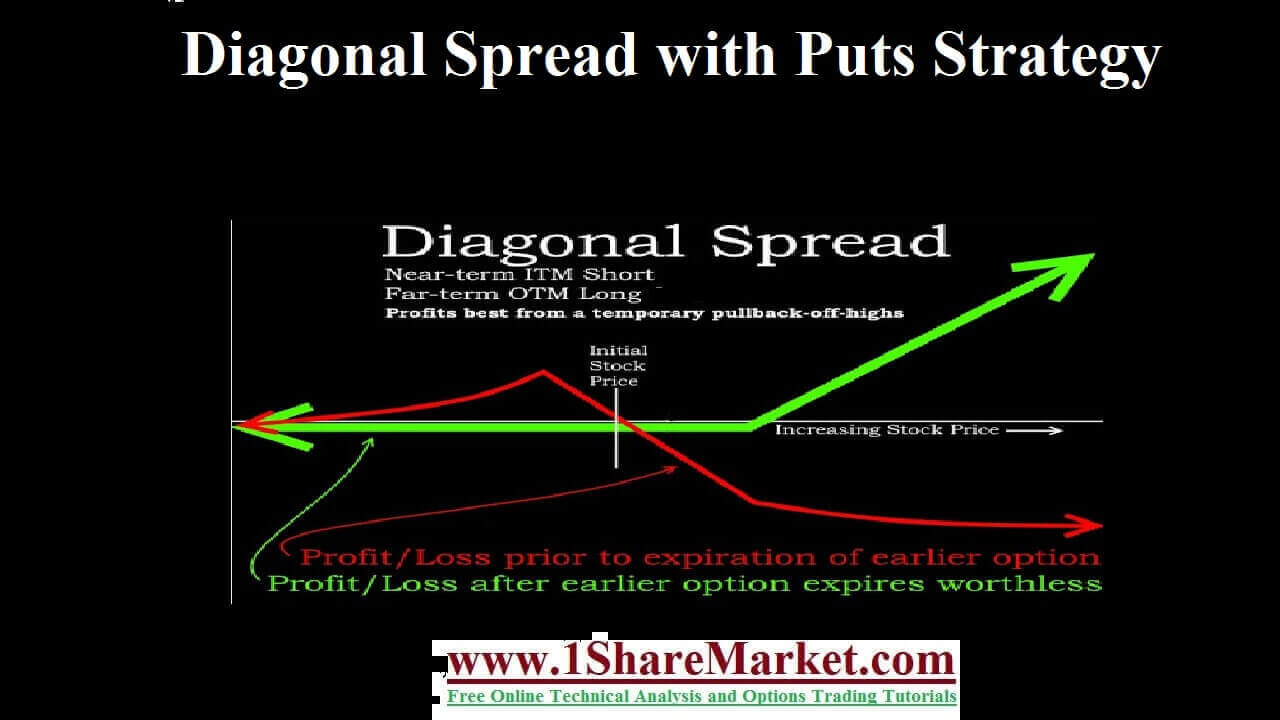Diagonal Spread with Puts Strategy : The long strategy put is created by buying one long term put with a high strike price and selling one short term put with a low strike price. They are invented for a net debit where both profit and risk are limited. It is a long diagonal spread that still earns a profit if the stock falls below the strike price of the short put. The tradeoff will cost more than a long calendar spread so the risk is more as the price rises. The benefit of a long diagonal spread is when the short put expires the long put remains open with profit potential. The patience and discipline of trading are required while trading with a long diagonal spread. And discipline is important because some changes in stock price have a high percentage of impact on the price of a diagonal spread. So traders must be disciplined in taking partial profits and also in taking small losses before loss becomes big.
The strategy has a net negative theta when established because the negative theta of the long put is more than offset of positive theta of the short put. The theta can vary from negative to positive depending on the relationship of the share price to strike prices of the puts. The theta is negative when the stock price is close to the strike price of the long put, and least negative/ positive when the stock price is close to the strike price of the short put.
Maximum profit= all the premiums received by selling short-term downside puts- initial premium to execute trade+ strike price-stock price final month. Maximum loss is limited to the cost which meets when the stock trades up above the long-term put strike price.
BreakevenThe breakeven is calculated as it has many scenarios and future trade impossible to calculate.
view more
We start ABC is trading $100 and expected to trade lower over the next four months. Then a trader buys the June 100 put for $4 and sells the April 95 put for $1.25 which results in an initial cost of $2.75.So if the stock trades down to $97 by April expiration. The April put is removed from the account and the trader gains on the long put. They will sell a May 95-strike put for $1.75. So if the stock trades up to $95 by May expiration, then the trader bank to the $1.75 and have $5 of intrinsic value in the long-term put. They will sell a June 90 put for $1.25. The stock trades down to $92 by June expiration, then June put will also expire. The traders pay a premium of $2.75 to open the trade and pock premiums of $1.75, $1.25. They have $8 of intrinsic value in the stock. This will result in a total profit of = $8.25.So if the stock moves higher to $110 after the initial trade, both options would drop in value, moving forward with the strategy impossible. If the stock never traded lower then both options would expire and the trader would lose his $2.75.
The above strategy is advanced that sets to capitalize on short-term higher volatility. It works best if the stock trade goes down, but slowly over time. It can be tricky when the strategy is about capturing volatility.
© 2020 All rights reserved My blogs (Posts) and videos is only educational purpose on stock market and depend on my self research and analysis. I can't advice to buy/sell any stock. because I'm not SEBI registered.If someone wants to inter the stock market, then my advice is first learn from an authorize institution or take advice from your authorized adviser.
Design by
Sraj Solutions Pvt. Ltd. Additional Services : Refurbished Laptops Sales and Servise, Python Classes And SEO Freelancer in Pune, India